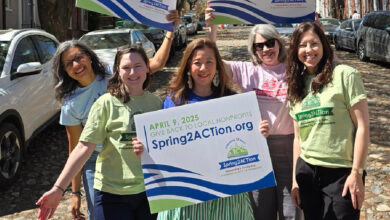I remember it like it was yesterday… September 11, 2001
On Tuesday, September 11, 2001, the sun rose into a cloudless sky. No one who lived through that day will ever forget it.
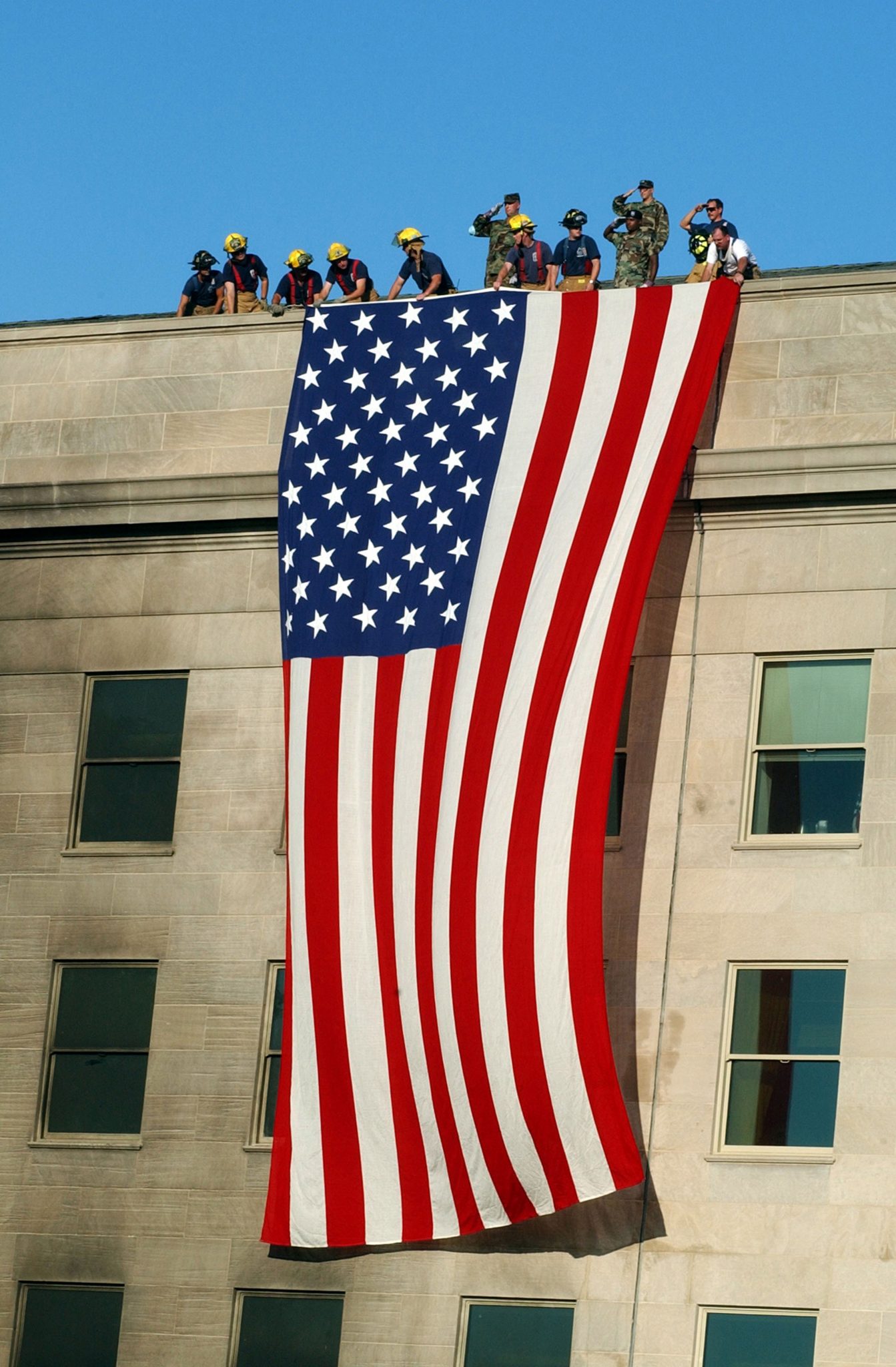
By Grace Billups Arnold and Kevin Dauray
Alexandria, VA – “I can’t believe it has been 20 years. It feels like it happened yesterday,” says Julie Clegg, a former teacher whose husband was inside the Pentagon on September 11, 2001. “The only reason I can see that it has been so long is that now my children have children of their own.
“This summer, my nieces, 17 and 15, were visiting from California. ‘One asked, Aunt Julie, can you tell me about your 9/11 story? Because we weren’t even born yet. Every year we see the memorials, and we know that you were there.’ So I told them.
“My nieces asking to hear my story gave me a different perspective. We have a whole generation of young adults who know almost nothing about that day. I am afraid that it won’t be as impactful in the future. The biggest thing is we have to keep telling people is, it’s our history. We need to remember.”
No one who lived through that day will ever forget it. Recounting it for the generation coming up is all the more vital to preserving our nation’s history.
On Tuesday, September 11, 2001, the sun rose into a cloudless sky. Rush hour that morning hummed along at a normal pace, whatever that was.
“I remember that day so vividly. The smells, the weather. I remember everything,” says Clegg, who was a substitute teacher living in La Plata, Maryland. Her husband, Joe Clegg, was a planner in the War Plans/Exercise Division on the Joint Chiefs of Staff. He worked in the Pentagon.
“I got the kids off to school on the bus,” says Julie. “Joe was already off to work. He always left early, around 4:30 am. I walked back into the house, got a cup of coffee, and turned on the TV. I didn’t sit down for the rest of the day.”
David Stevens, a Senior Sales Representative for the Congressional Quarterly, was on his way to a meeting at the Pentagon. The meeting had been pushed back 30 minutes because one attendee was running late. “I was on Metro, and when it came above ground at Arlington Cemetery,” he says, “my wife called me on my Blackberry. A plane had crashed in New York.”
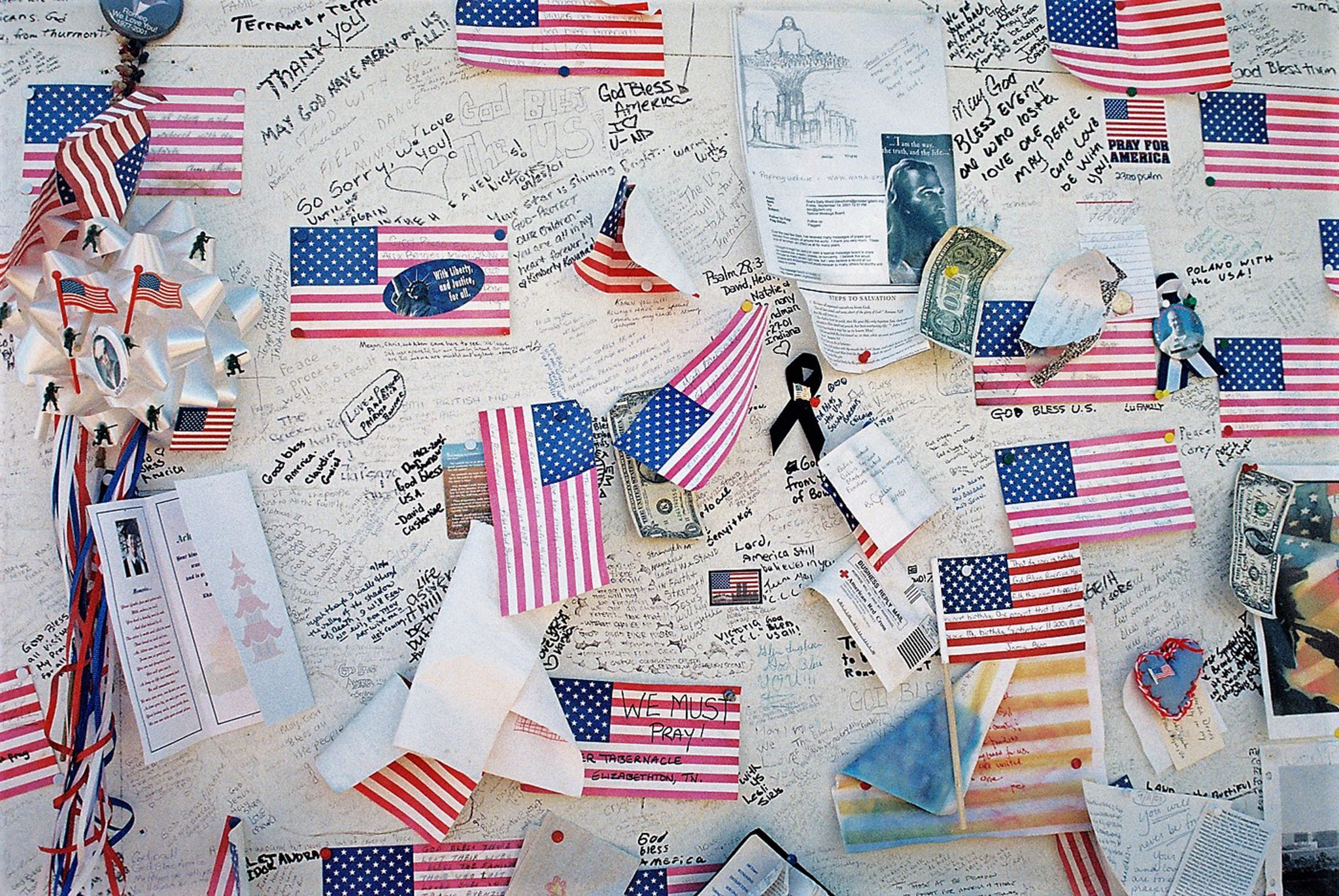
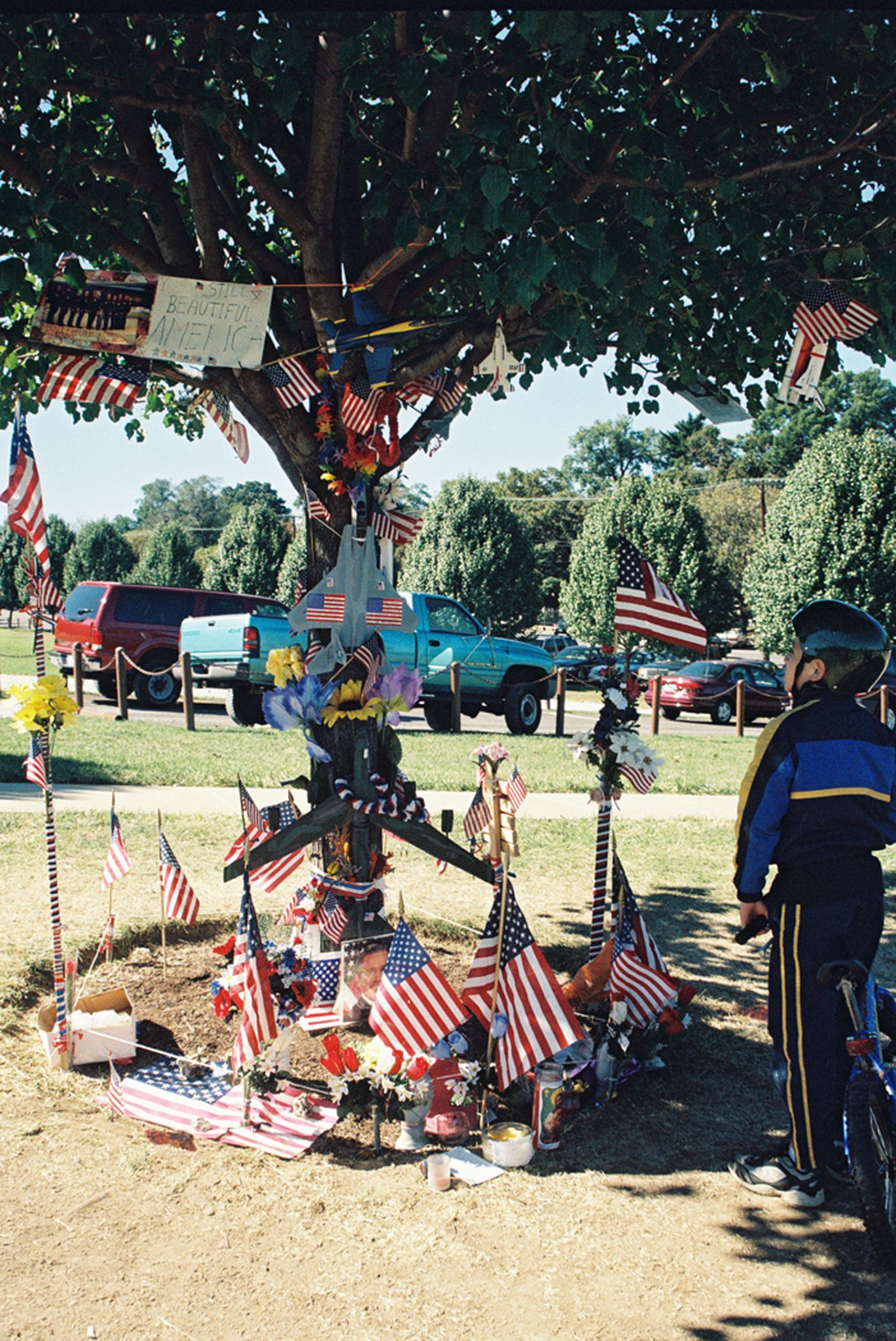

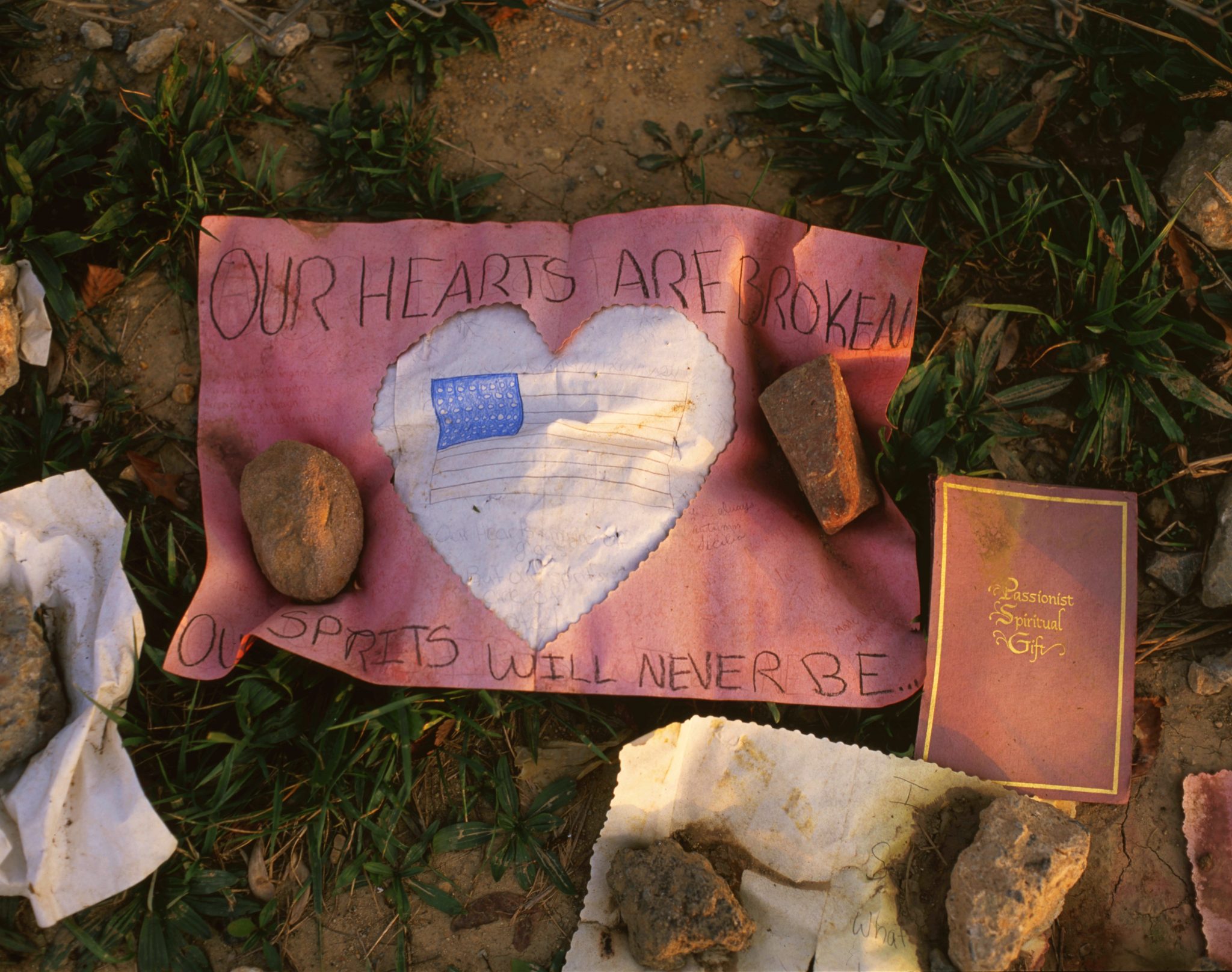
A tourist plane, a small plane, a private plane. These were the first thoughts of millions of Americans. Yet a gloomy tension loomed, a worry that it was something more sinister.
“I really want you to come home,” David’s wife told him. “I’m heading to the most secure building in the world,” he told her. Then he lost cell signal as the Metro once again went underground.
Julie was glued to the TV when the second plane slammed into the second tower. “Oh my God, oh my God, oh my God. That was all you could hear from the news people,” she says. “So I picked up the phone, cordless, no antenna, and called Joe. Maybe you need to get out, I told him. He said, ‘Honey, this is the safest building in the world.’”
“I remember everyone was relaxed,” recalls David. “Nonchalant, not as intense as it is now. There were a couple of security guards, but no one acted concerned.” There was always construction going on at the Pentagon; there was always noise. But what David heard next was not just noise.
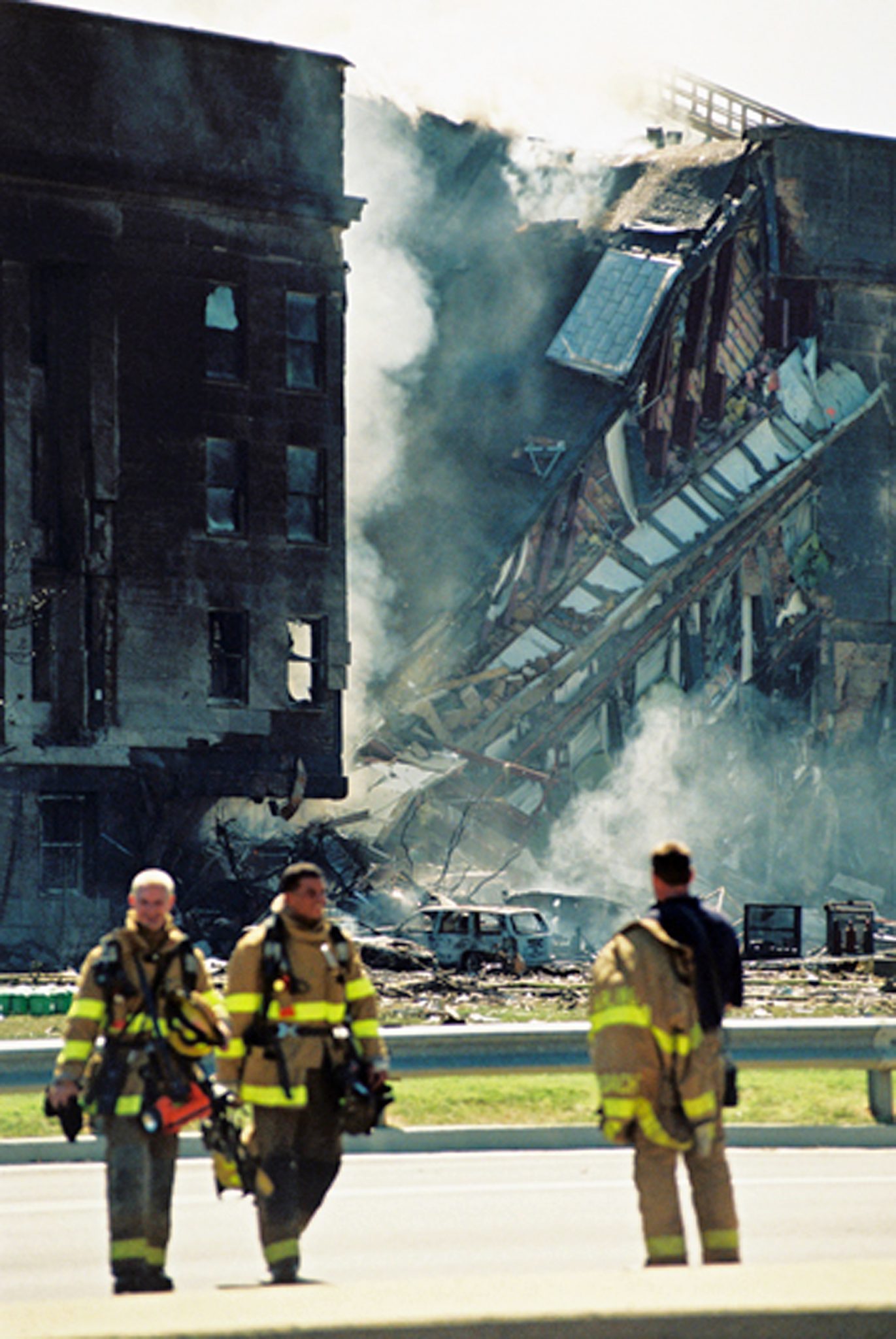
“I was walking toward the area of impact, on E ring, although I didn’t know it. Suddenly, a dozen people were running toward me yelling, ‘Bomb!’ I don’t recall feeling any impact, any explosion. But when they pushed us through the exit doors, you could see it. A big fireball, ashes raining down. My blue suit covered in ash. Then everything moved in slow motion.”
As hundreds ran out and away from the Pentagon, others ran into the fray: reporters, photographers, videographers.
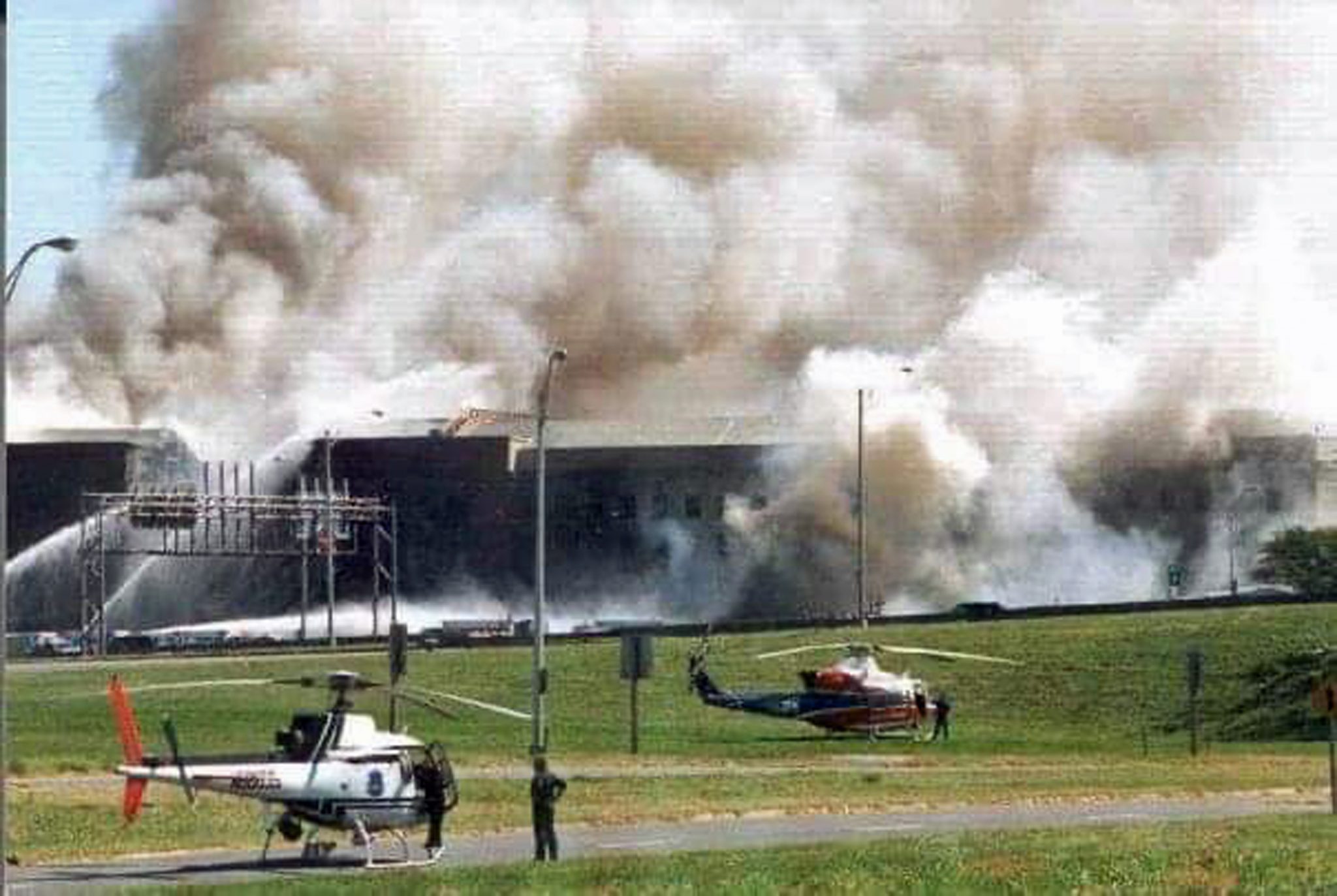
Sean Kelley, now a professional photographer, was a sales representative for Nissan then. He was watching TV at a friend’s house in Chantilly when the first plane hit the World Trade Center. A little later, he saw the plane go into the Pentagon and knew he had to go there. His father had a meeting scheduled at the Pentagon that morning. Sean didn’t find out until noon that the meeting had been cancelled, so the attack was immediately personal. Loading his mountain bike onto his VW Bus, Kelley drove I-395 North to the scene.
“I was in the zone shooting, I saw triage, I saw bad things. But I felt I needed to document it for historical reasons,” he says. He was among those who ran toward the Pentagon after the plane hit. “I had film, and I just wasn’t going to leave. I felt it more duty than pride to take pictures.”
Four miles south of the Pentagon in Alexandria, Bob Pugh, a photographer and videographer, was monitoring the news on WTOP and listening to police and fire radio transmissions. He went straight to the Pentagon.
After shooting his first roll of film, Sean Kelley crept into shade under a tree to reload when Pugh approached him.
“Do you have any extra film?” asked Bob.
“What?” yelled Sean.
“Do you have any extra film?” Bob repeated. Without thinking, Sean reached into his pocket and handed Bob two rolls of film. “All I had on me was my business card,” says Bob. “So I gave that to him, and we went our separate ways, doing our separate things. I never thought I would work with him decades later.”
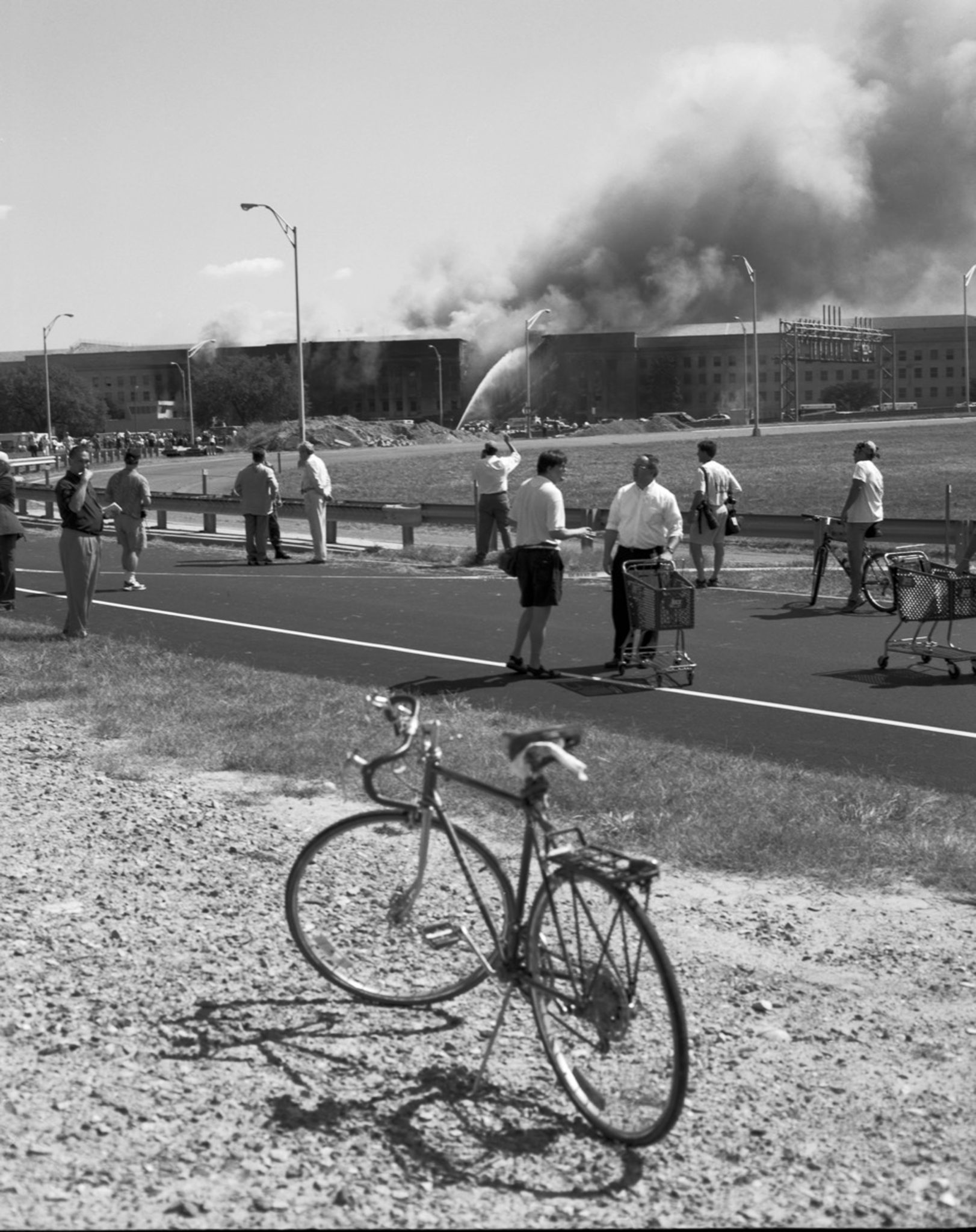
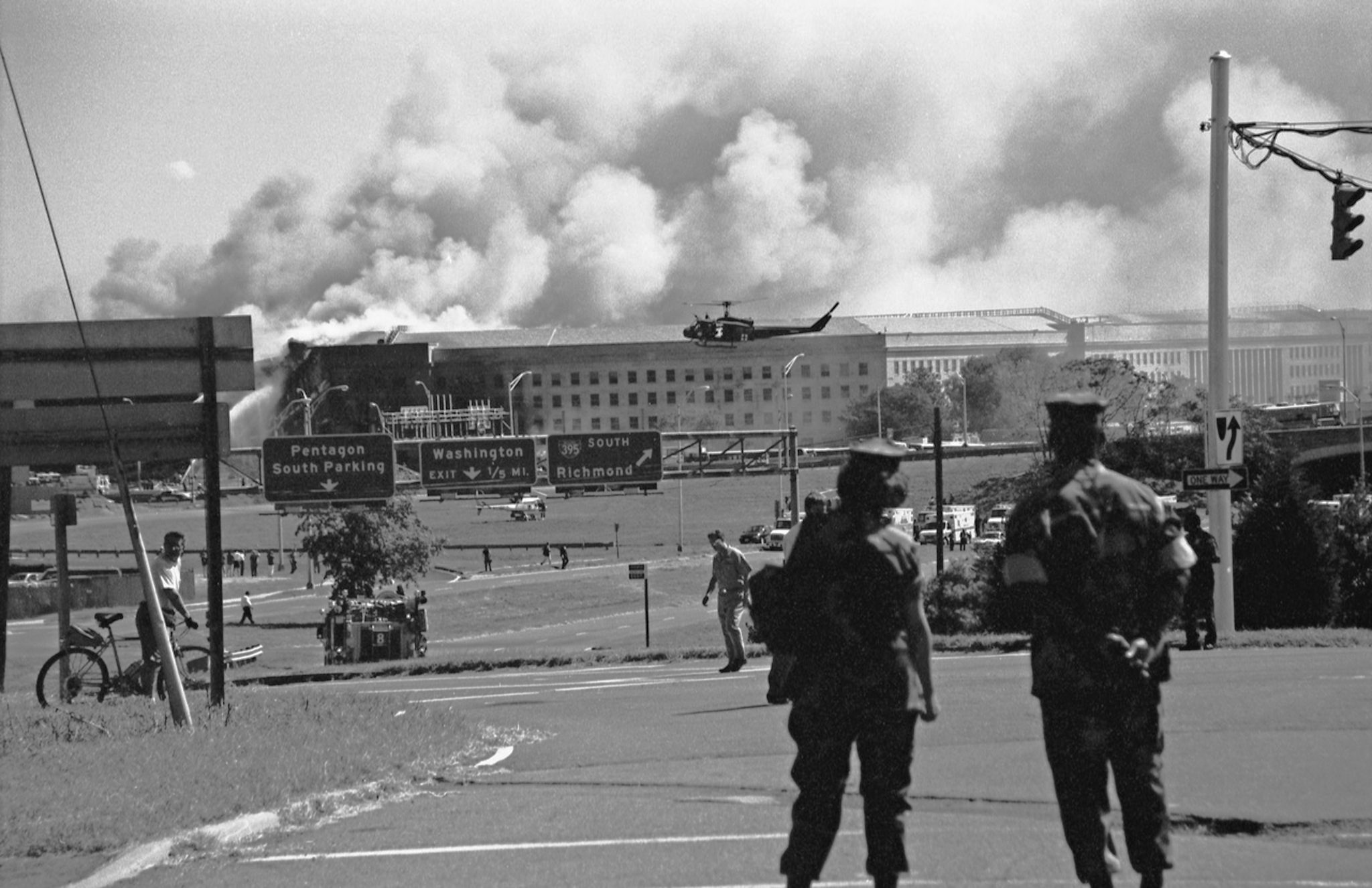
(Sean Kelley)
Another photographer, former T.C. William history teacher Joe Pisciotta had just arrived home from dropping his son off at elementary school when his wife called to tell him that a plane hit the Twin Towers. He saw the second impact on TV, certain that what had occurred was a terrorist attack.
Joe drove to see his father, a retired Air Force Lt. Colonel who had worked in the Pentagon, feeling that the distinguished veteran could help him understand what was happening. Traveling down Columbia Pike, Pisciotta heard and felt a very loud explosion. In the distance, looking straight ahead, he saw black smoke erupting from the Pentagon. Like Kelley, Pisciotta knew he should record the event and he had his camera. Taking every shortcut possible, Joe got to a block from the Pentagon 18 minutes after the plane hit.
“I began shooting immediately as smoke was bellowing out of the West side of the Pentagon,” he recalled. “Panicked people from the [building] were running past me. At first, I thought it was just their natural instinct to escape from the explosion, but then a Navy guy came running toward me, waving his arms in a wild way [and] yelling, ‘Another plane is incoming.’”
Pisciotta got back in his car, moving it north toward Rosslyn in case he needed to flee for his own safety. But he was soon back to photographing the attack. Moving closer, he tried to fit in by standing around a group of military personnel, and realized he was out of his element when they asked if anyone had combat or medical experience. A short time later, the FBI and police declared the Pentagon a crime scene.
“I was watching the fire burn inside the roof of offices that they had just finished renovating,” recalls Joe. “I saw a firetruck explode and a fireman get scorched by fuel and fumes and flames, but I was documenting history, and that was my goal the entire time.”
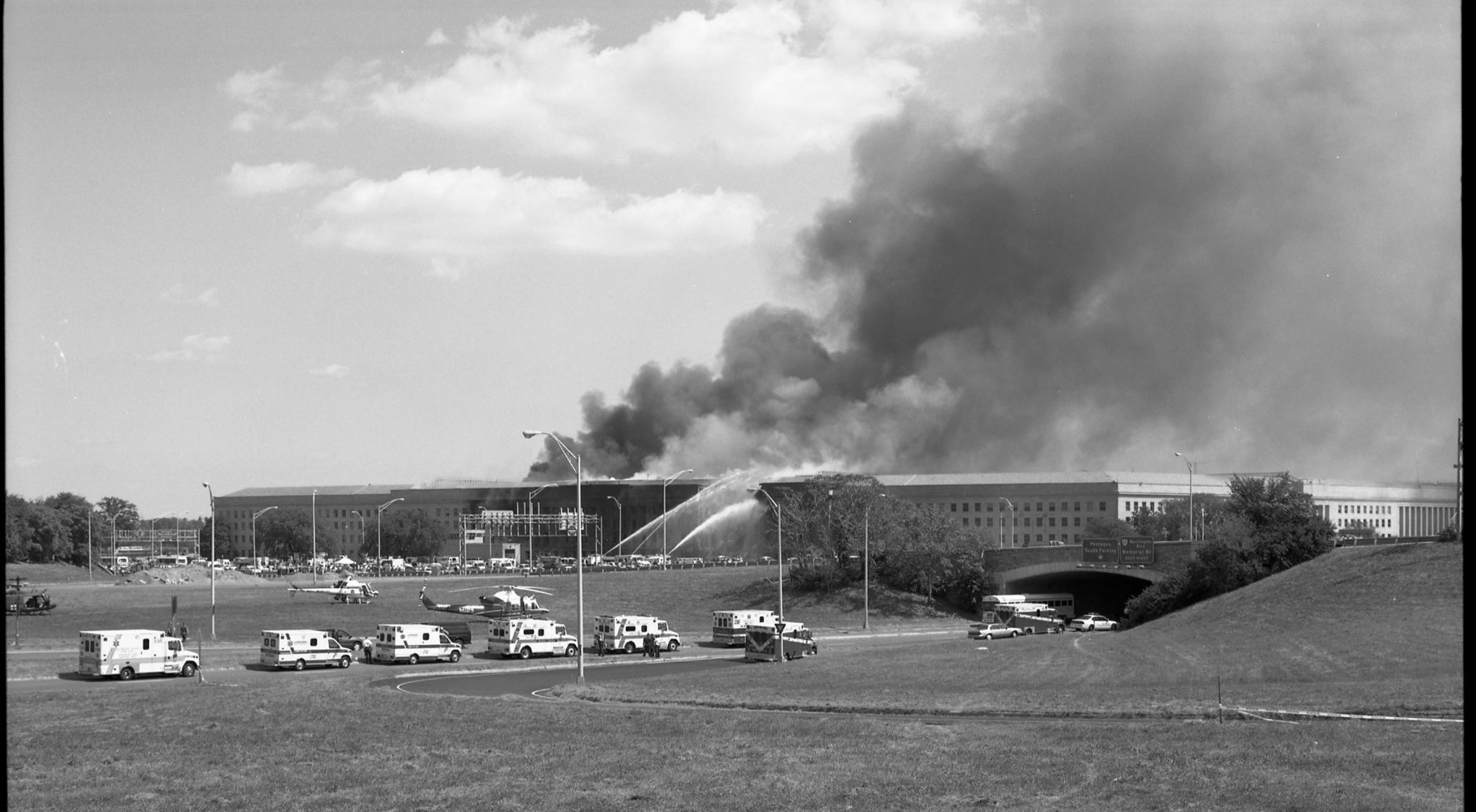
Despite the gore, destruction, and palpable fear, Joe, Sean, and Bob didn’t leave. Just as it was the duty of first responders to rescue those inside, it was the duty of photographers to record this moment for posterity, so they stayed.
Others fled the city, or tried to anyway.
There were no cell signals. No open roads. D.C. was gridlocked. People hailed cabs, hitched rides, detoured, ran, and walked to their homes to let their loved ones know they were okay.
“I finally hailed a cab,” says David Stevens. “I got in and my cab driver started to cry. He had immigrated to the U.S. from Iraq just a year before. His family and children had just been approved to come over too. But at this point, we all thought it was terrorism. He worried he would never see his family again. He took me back to Bethesda and then he went home. That day affected a lot of people, more than just Americans.”
David was safe back in Bethesda, but it took Joe Clegg three-and-a-half hours to make it home. “When Joe walked in, we all just ran to him,” says Julie. “When I hugged him, he reeked of jet fuel; I can still smell it to this day. We sat there, we talked, and he told us all he knew. The kids and I didn’t want him out of our sight.
“That night, we did get sleep. I did not feel in danger, because we had him,” but that evening, Clegg got a call to report for duty in the morning.
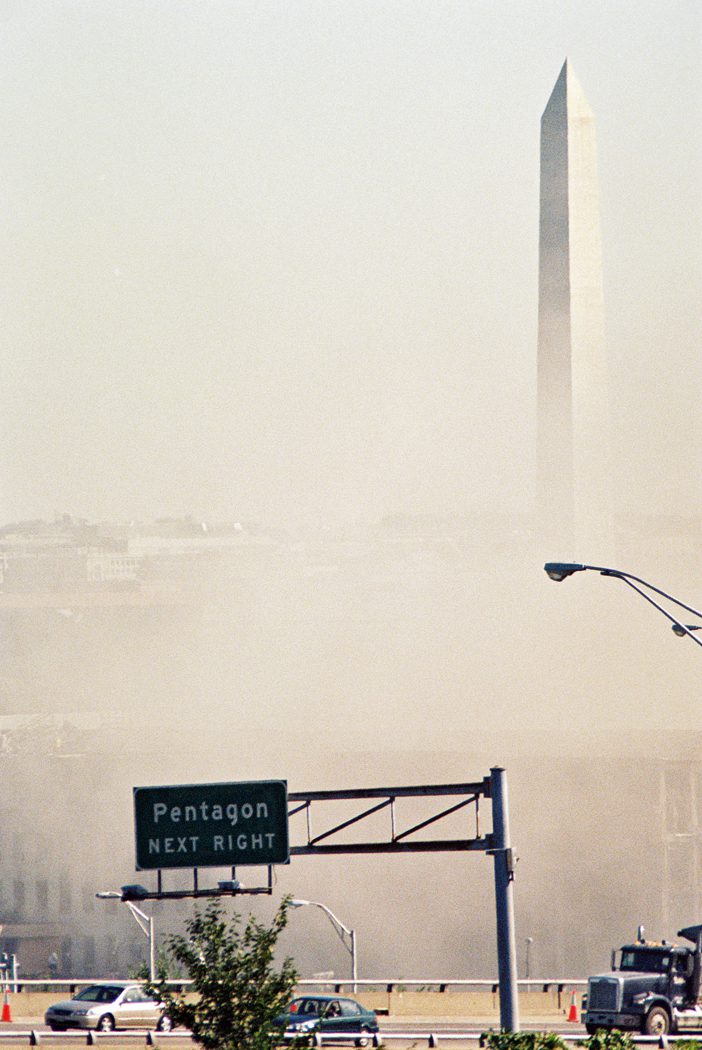
Throughout that night, news crews scrambled to consolidate their material and present it to the public. The world had to know the facts. Bob’s videos were part of that material, played on a continuous loop over every news channel in the District and beyond for months.
“The local channels all had my videos,” he says. “They led with them because they were so detailed. That probably went on for about a month or two, and then every anniversary thereafter.”
Joe Pisciotta recalls returning to T.C Williams High School following the attack to share his photos with former students and colleagues. The reactions varied from curiosity to shock to disgust. Looking back, he admits that perhaps the timing wasn’t right for some people. Those close to him eventually understood that the photos were taken with good intent to record the real event of 9/11. That October, the school’s student news outlet, Theogony, ran a front-page story on the Pentagon attack using some of his work.
Bob’s videos circled the globe and Joe’s photos traveled through high schools and even to New York. “Here is New York,” a photo exhibit on the 9/11 attacks in Manhattan, took a selection of Pisciotta’s photos for their collection, one of which became the photo on the entry portal for their website.
Twenty years later, Sean, Bob, and Joe still work together to preserve 9/11 history, exhibiting their photos through their nonprofit Still Standing ̶ Still Free (stillstandingstillfree.org). Their remembrance exhibit will be on display September 11 through October 11 at the Fashion Center at Pentagon City to honor the 20th anniversary.
As founder of the group, Sean Kelley says, “It is incredibly important for people to understand, to remember, to know the truth.”
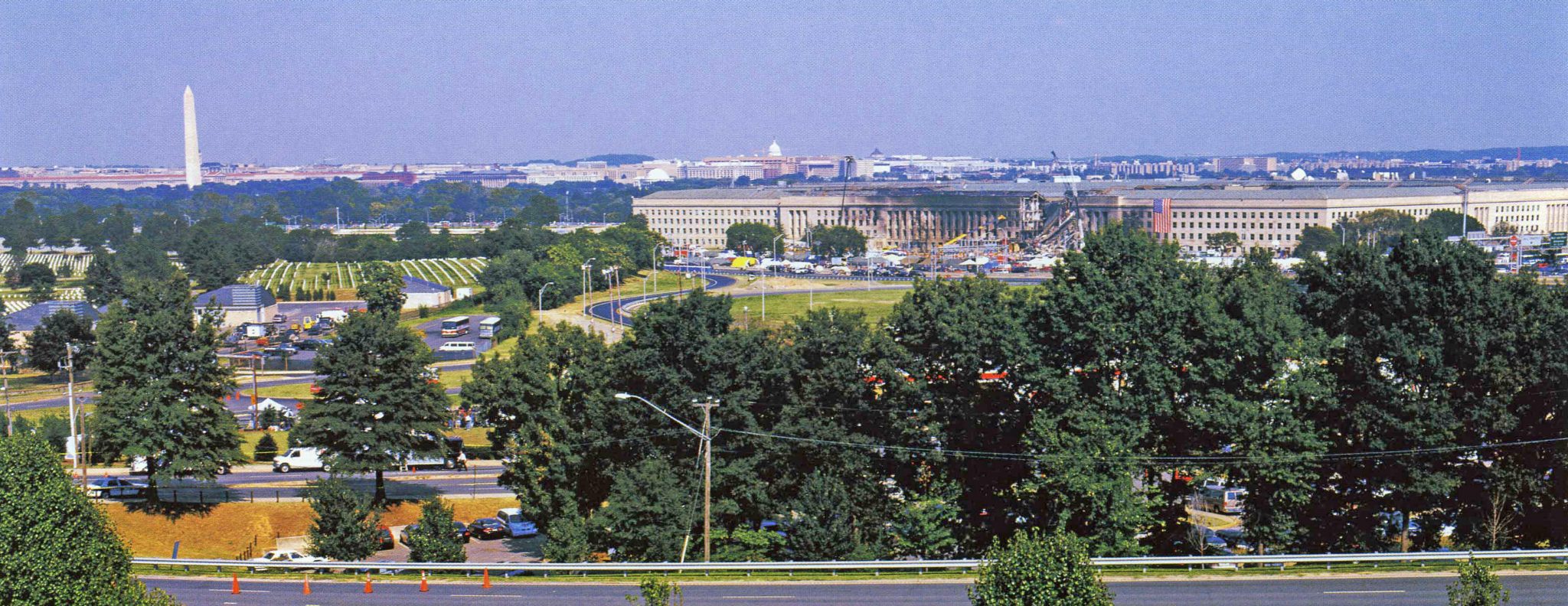
Julie Clegg agrees as she reflects, “Looking at it now, part of me is thankful that the building was built the way it was. When I picked my son up from school that day, the first thing he said was, ‘Dad’s dead, isn’t he?’ I cried, ‘No! Why do you think that?’ He told me that military child after military child was pulled out of school that day, while civilian children remained. I told my son the truth. And if the building were not designed the way it was, I might have had to tell my son something different.”
For David Stevens, telling his truth is a way to preserve the impact of that day. “When I look back,” he says, “had my meeting not been postponed, I would’ve been in the area of impact. I probably had PTSD following that day. I definitely had anxiety.
“To me, walking into the Pentagon is always an honor. If it weren’t for the people there, we probably wouldn’t exist as a nation. I worry as time goes on whether people will think of 9/11 as just another tragic day, or as something we should always remember.”
Still Standing – Still Free
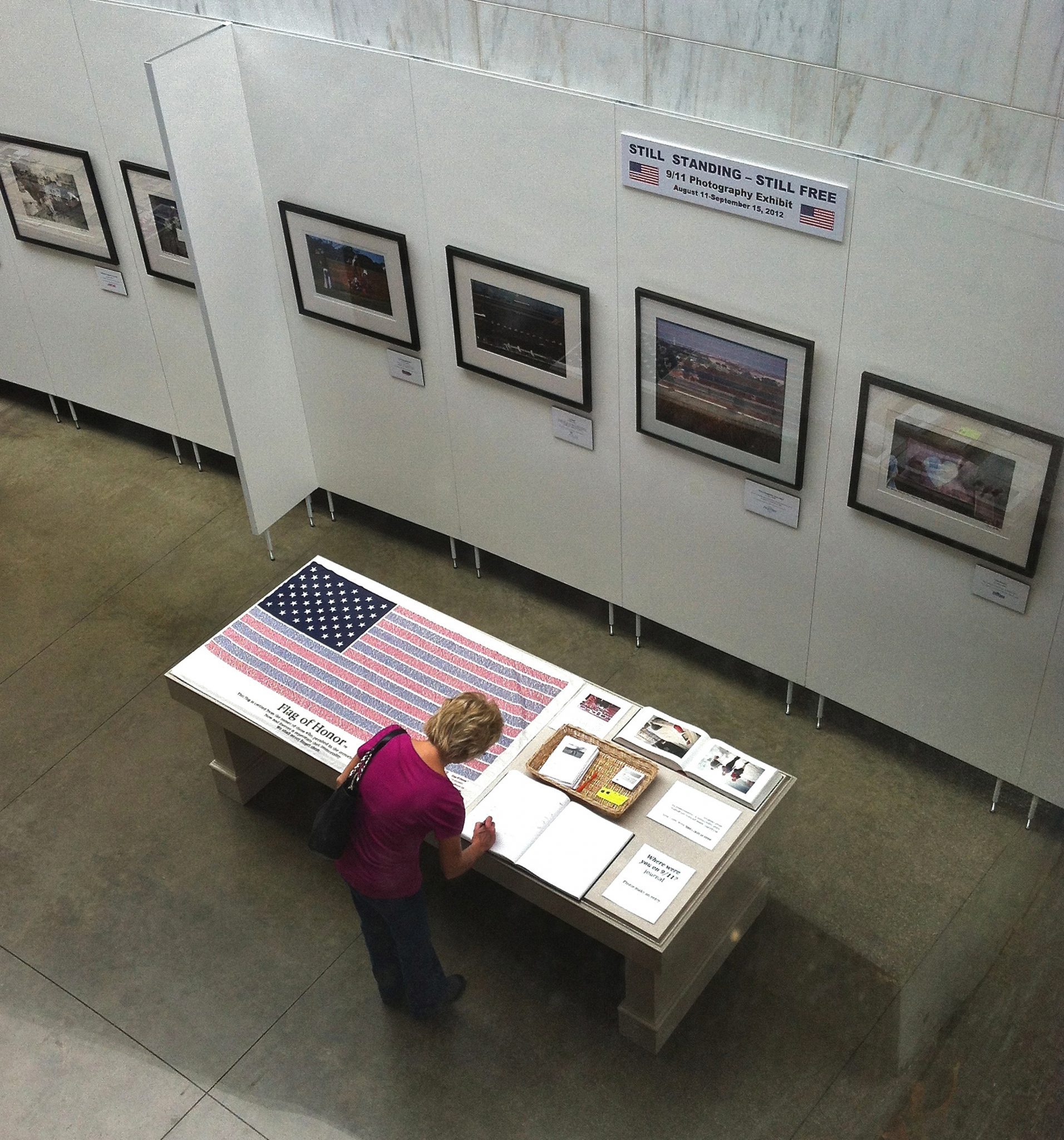
Tuesday, Sept. 11, 2001, was one of the darkest days in American history. Not counting the 19 hijackers, 2,977 people died and more than 6,000 were injured when the World Trade Center fell, the Pentagon was attacked, and a commercial aircraft was crashed in a Pennsylvania field.
In the weeks and months after the terrorist attacks, our nation vowed never to forget. And we haven’t. Every year since, the names of the are read aloud during solemn ceremonies. Twenty years on, every person who was old enough to know what was happening that day can recall where they were when the news broke.
Photographers Joe Pisciotta, Bob Pugh, and Sean Kelley are sharing their photos in a new exhibit called “Still Standing – Still Free,” set to open at the Fashion Center at Pentagon City on Saturday, September 11. Many photos in the display have never been published and will offer a fresh perspective. A VIP reception on the evening of September 10 will be held for project donors who helped defray costs for the nonprofit Still Standing – Still Free, Inc. (stillstandingstillfree.org).
While New York City’s coverage of its 9/11 experience is vast, the Pentagon has very little. Each exhibit photo – along with assorted memorabilia and a video – captures moments in time between 9:50 am and 5 pm. The video, shot by Bob Pugh, first aired on NBC4, FOX5, and WUSA9 before he made it home that afternoon.
A shared experience and common sense of purpose bonded these men. “My 9/11 Pentagon photos [are] a visual teaching tool so that people, especially American youth, never forget the event and see how Americans showed incredible heroism,” says Joe Pisciotta.
Kelley sees sharing the photos as a public service. For those who remember 9/11, were too young to remember what happened that day, or were not yet born, this exhibit can help all of us keep the promise to never forget.
Still Standing – Still Free runs September 11 – October 11, 11 am to 8 pm (M-Th), 10 am to 9 pm (F-Sa), 11 am to 6 pm (Su). The Fashion Center at Pentagon City is located at 1100 S. Hayes St. in Arlington. Entry is free.
ICYMI: Help Feed the Hungry During National Day of Service on 9/11 Anniversary

